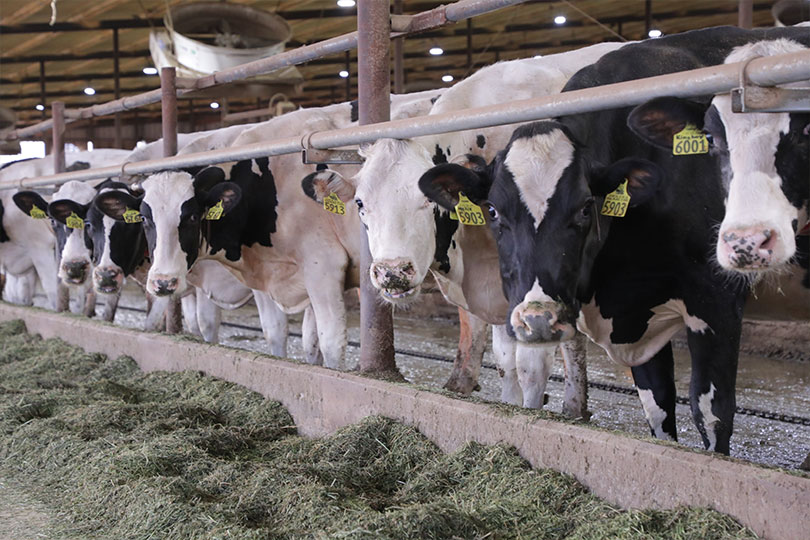By Shelby Shank
Field Editor
Advancements in the dairy industry are increasing dairy farm efficiency and having a positive environmental impact.
The dairy industry now requires 930,000 fewer cows to produce the same amount of milk as in 2007. This is a result to improvements in farm management practices, genetics, animal care and technology.
“Over the past 15 years, the industry has gained a better understanding of how to go about managing a dairy animal,” Chad Huyser, president of Lely North America, said. “Technology is allowing us to better understand the animal’s genetic potential and how we feed to that potential.”
Technology in nutrient management and precision agriculture help dairy farmers optimize the use of resources to manage cropland more efficiently. Sensor-based technologies help enhance feed ration quality, which has a direct impact on milk yield. Altogether, dairy farmers can produce a lot more with a lot less and have a better impact on the environment.
A new report, “Environmental Benefits of Modern Dairy, Hay, and Forage Production Technologies,” by the Association of Equipment Manufacturers’ (AEM) new report, highlights several statistics that help quantify the environmental impact of modern dairy practices in the U.S. and Canada. As milk yield increased 19% over the past 15 years, feed use decreased by 15%. Land use for dairy farming also has decreased 26%, followed by a 17% decrease in greenhouse gas (GHG) emissions and 10% decrease in water use.
New technologies allow dairy farmers the ability to collect data related to animal health, milking, feed rations, crops and weather. This data helps dairy farmers better understand the true genetic potential of each cow. Collected data includes bodyweight, health and comfort, and robotic milking equipment can provide valuable data to help farmers maximize their farm management decisions.
“Robotic feeding systems provide a more stable diet and better dietary intake,” Matt Daley, North American president of GEA Farm Technologies, said. “That increases the cow’s potential for a healthier and longer life, which increases the amount of milk it can produce over its lifetime. Plus, robotic feeding systems are battery-operated, which is also good for the environment.”
Other technological advancements can be seen in manure management to help dairy farmers reduce their GHG emissions and convert waste into valuable fertilizer and renewable energy. Precision agriculture technologies ensure that each acre on a dairy farm is managed efficiently with less water use.
The effect of multiple technologies and data is what helps dairy farmers make better decisions that drive efficiency, productivity and sustainability.
But to help dairy farmers harness the data available, access to internet connectivity is needed. Once dairy farmers can count on rural broadband, the more widespread adoption of these technologies can unlock the true potential of data and knowledge for a more productive and sustainable approach to dairy farming.
“We need to help farmers and continue generating more interest in these technologies. Nonetheless, we have done really well to this point, and I believe we have a great path forward,” Fabian Bernal, head of sustainability at DeLaval, said.

